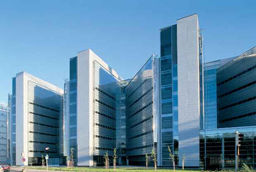DNF Security Solutions for Rising Video Surveillance Storage Demands
29
JUNE, 2017
Video surveillance camera is becoming more of a smart device. They are actually turning into essentially micro servers. In addition to higher resolutions they have got a lot of sensors per camera and there’s a lot of processing taking place on the camera.
However, professionals are looking at the business value of the data. Camera technology is changing, retention times are increasing and analytics are becoming more sophisticated. All of that is changing the architecture of the infrastructure that video storage is no longer a peripheral, but a fundamental part of the design. There are some important considerations that we’ve got to have as we look at solutions that will comprise our storage architecture:
1. Performance
Performance is an important factor as camera counts are going up as well as resolutions, and in surveillance and safety applications we can’t afford to have any kind of dropped frames. There’s a big difference in a file system that’s designed for video applications than a one designed for IT applications. Secondly, as the analytics become more sophisticated organizations are moving from prosecution to prevention. For instance, While it’d be great to solve the crime of who assaulted the person in the parking lot, we’d much rather be in a position to prevent that crime from happening. That has serious performance implications on the architecture because we’re trying to scan data and process it and get the answer back in as real time as possible.
2. Flexibility
Flexibility is a key thing as you want to be able to scale as retention times are increasing, image formats are changing, and cameras are recording at higher resolutions. And all this comes at a cost.
3. Cost Control
Being able to manage all of the above within the cost framework of our project budgets is really important. And that is about managing storage based on a particular day of retention on the right type of technology as well as managing the movement of data through that system.
4. Accessibility
Accessibility is key as you are creating an infrastructure for security and safety professionals not IT professionals. You got to make it as easy as possible to access that data without having to hunt for it or have someone else hunt for it.Accessibility Accessibility is key as you are creating an infrastructure for security and safety professionals not IT professionals. You got to make it as easy as possible to access that data without having to hunt for it or have someone else hunt for it.
5. Compatibility
Last but not least as you’re looking for your compatibility there will be changes in Video Management Software (VMS). You’ll see new platform technologies come out, new applications come out. The ability to remain transparent to those changes is a critical part of video surveillance system design.
Unified Surveillance Video Analysis and Storage Solutions
DNF Security provides Modern surveillance systems a video storage platform that’s designed specifically for security and law enforcement professionals who have to manage these challenges coming from this new technology. But there’s a big difference in this platform from IT based solutions.
DNF Security video storage platform offer a tiered architecture that provides balance and combination of high performance and high storage capacity integrated with DNF cloud connection for backup and archive.
The DNF Falcon Series video storage appliances are not just about handling performance or handling the ingest aspect of it and the amount of cameras and the resolution, it’s also about the whole network operation.
If you have to move data from a layer of storage back through the video management system or restore the data and then work on it, that has a lot of implications on the network traffic. And with The DNF Falcon Series video storage appliances we have a file system that unifies these different storage technologies under a single volume, a single namespace. This means that the video management system as well as the analytic servers all have a single point of entry into a large storage pool.
This has a big impact on performance because the data movement takes place below the video management system or below the analytics servers and so it minimizes the impact through those particular applications. The other aspect that’s really important is it allows you by balancing these tiers to deliver the total capacity you need much more cost effectively. DNF Falcon Series video storage appliances enable you to balance those tiers to keep high performance and then be able to build your storage capacity and days of retention out with lower cost tiers of storage.



